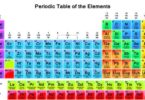Auditory nerve carries information on
(a) Sound
(b) Taste
(c) Smell
(d) Temperature
Pacinian corpuscles sense
(a) Temperature
(b) Pressure
(c) Pain
(d) Light
Who is the Father of Biology?
(a) Werner Heisenberg
(b) D W Griffith
(c) Aristotle
(d) Vladamir Zworkin
Pre-biotic soup consists of :
(a) Water
(b)Water and vegetables
(c) Water and meat
(d) Water and chemicals
Which of the following belongs to Mollusca?
(a) Cray fish
(b) Jelly fish
(c) Cuttle fish
(d) Hag fish
Food web is a system of interlocking and interdependent
(a) Food cycles
(b) Food chains
(c) Food system
(d) None of these
Related: mcq on blood pressure
Who developed vaccination against small pox?
(a) Lister
(b) Jenner
(c) Flemming
(d) Pasteur
Who is the father of taxonomy?
(a) Karl Marx
(b) Martin Luther
(c) Wilbur Wright Orville
(d) Carolus Linnaeus
Suberin is a component of :
(a) Cell wall
(b) Plasma membrane
(c) Mitochondria
(d) Nucleus
Who proposed the “Recapitulation Theory”?
(a) Lamarck
(b) Darwin
(c) Hugo De Vries
(d) Haeckel
Leucoplasts are:
(a) Green
(b) Blue
(c) Red
(d) White
Fermentation is conducted by
(a) All fungi
(b) All bacteria
(c) Some fungi and some bacteria
(d) All micro-organisms
Related: Test Your Basic Histology Knowledge
In which of the canal system, spongocoel is lined by choanocytes?
(a) Asconoid type
(b) Syconoid type
(c) Leuconoid type
(d) Syconoid and Leuconoid type
Best definition of a ‘species’ is
(a) A group of animals that can live together
(b) Animals that can interbreed successfully
(c) Animals that cannot interbreed
(d) None of the above
In Paramecium, the process of reconstruction of nuclei in a single individual which takes place without the fusion of gametic nuclei is known as
(a) Cytogamy
(b) Automixis
(c) Hemixis
(d) Endomixis
Which of the following is a matching set in taxonomy
(a) Man, Chimpanzee, Monkey
(b) Cuttle fish, Jelly fish, Silver fish
(c) Bat, Pigeon, Crow
(d) Oyster, Octopus, Star fish
Karyokinesis is the division of:
(a) Nucleus
(b) Mitochondria
(c) Ribosomes
(d) Lysosomes
The regular sequence of cell cycle is
(a) S, G1, M, G2
(b) G1, S, M, G2
(c) G1, S, G2, M
(d) G1, G2, S, M
Related: Branches of Biology
Nociceptors sense
(a) Temperature
(b) Pressure
(c) Pain
(d) Light
The hormone that promotes reabsorption of water from glomerular filtrate is
(a) Vasopressin
(b) Oxytocin
(c) Relaxin
(d) Calcitonin
Which of these is not one of the 4 kinds of bacteria?
(a) Fungus
(b) Coccus
(c) Bacillus
(d) Gladiolus
Monoclonal antibodies are produced by
(a) Immortalization of myeloma cells
(b) Immortalization of lymphocytes
(c) Fusion of myeloma cells and B cells
(d) Fusion of myeloma cells and T cells
In which of the following differentiation is not seen:
(a) Amoeba
(b) Maize plant
(c) Snail
(d) Lizard
Pasteurization makes foodstuff free from
(a) All vegetative forms of bacteria
(b) Vegetative forms of all pathogenic microbes
(c) All living organisms
(d) All bacteria
Related: Grasshopper facts questions and answers
Which of the following is called auxin?
(a) Gibberelic acid
(b) Ethylene
(c) Insulin
(d) Indole acetic acid
Which of the following cells secrete antibodies?
(a) Osteocytes
(b) Monocytes
(c) Glial cells
(d) Fibroblasts
Two words comprising binomial nomenclature are
(a) Family and Genus
(b) Order and Family
(c) Genus and Species
(d) Species and Variety
Muscles responsible for movements of hands and legs is called
(a) Striated muscle
(b) Non-striated muscle
(c) Cardiac muscle
(d) All
Composition of pearl is
(a) Only calcium carbonate
(b) Only colchitin
(c) Calcium carbonate, water, organic matter and other minerals
(d) (a) and (b) both
Solution used in diffusion experiment
(a) Potassium permanganate
(a) Copper sulphate
(c) Both
(d) None
Related: The Heart – Anatomy and Physiology Quiz
Which one of the following has involuntary muscles?
(a) Legs
(b) Arms
(c) Neck
(d) Intestine
Which ingredient killed hundreds of people in Bhopal gas tragedy, India?
(a) Nitrous acid
(b) Mustard gas
(c) Carbon tetrachloride
(d) Methyl isocyanate
Which of the following organelle is involved in secretion ?
(a) Mitochondria
(b) nucleus
(c) Lysosomes
(d) Golgi complex
AIDS virus contains
(a) DNA only
(b) RNA only
(c) DNA + Protein
(d) RNA + Protein
Development of egg without fertilization is
(a) Apomixis or Adventive embryony
(b) Apocarpy or Polyembryony
(c) Parthenocarpy
(d) Parthenogenesis
Maltose is an oligosaccharide, made up of two monosaccharides, which are
(a) Glucose and fructose
(b) Fructose and fructose
(c) Glucose and glucose
(d) Galactose and glucose
Related: DNA and RNA structure (practice) quiz
Penicillin, an antibiotic, is obtained from a
(a) Fungus
(b) Virus
(c) Flowering plant
(d) Bacterium
Chiasmata are first seen during
(a) Leptotene
(b) Pachytene
(c) Zygotene
(d) Diplotene
Double fertilization in angiosperms was discovered by
(a) Strasburger
(b) Maheswari
(c) J.C. Bose
(d) Nawaschin
Microfilaments are parts of :
(a) Mitochondria
(b) Lysosomes
(c) Cytoskeleton
(d) Nucleus
Which of the following cell organelle is in continuation with the outer membrane of nucleus?
(a) Lysosomes
(b) Endoplasmic Reticulum
(c) Mitochondria
(d) Peroxisomes
Related: Polarization of Light MCQs
The substance used in the tissue culture medium for induction of shoots in callus is
(a) ABA
(b) GA3
(c) IAA
(d) Kinetin
Zymogen cells of gastric glands produce
(a) Chymotrypsin
(b) Trypsin
(c) Pepsin
(d) Pepsinogen
Which of the following gases was not used by Stanley and Miller in their experiment?
(a) Hydrogen
(b) Methane
(c) Ammonia
(d) Oxygen
What is the respiratory quotient of glucose?
(a) 0
(b) 0.8
(c) 0.71
(d) 1.0
Eggs having yolk in their center and cytoplasm in the peripheral layer are called
(a) Isolecithal
(b) Microlecithal
(c) Cenrolecithal
(d) Telolecithal
Related: questions related to respiratory system
Chromatin is in a decondensed state in:
(a) Anaphase
(b) Metaphase
(c) Prophase
(d) Interphase
Which are identified to be the earliest living forms?
(a) Fungi
(b) Cyanobacteria
(c) Protozoa
(d) Small plants
Which one of tne following organelles in a cell is considered as a suicide bag?
(a) Centrosome
(b) Mesosomes
(c) Lysosomes
(d) Chromosome
It is now possible to breed plant and animals with desired characters through
(a) Ikebana technique
(b) Tissue culture
(c) Genetic engineering
(d) Chromosome engineering
Centrioles participate in :
(a) Protein synthesis
(b) Cell division
(c) Cell movement
(d) Cell death
Related: electromagnetic interference MCQs
Gibberelic acid is a
(a) Pesticide
(b) Insecticide
(c) Plant hormone
(d) Enzyme
Spindle fibres disappear during:
(a) Anaphase
(b) Metaphase
(c) Telophase
(d) Interphase
This type of parenchyma is seen tubers and rhizomes
(a) Chlorenchyma
(b) Aerenchyma
(c) Storage tissue
(d) Water storage parenchyma
Nuclear structure disappears during
(a) Anaphase
(b) Prophase
(c) Metaphase
(d) Interphase
Fat is stored in
(a) Adipocytes
(b) Platelets
(c) Glial cells
(d) Fibroblasts
Related: boron family questions with answers
Lignin is the major component in the cell walls of following tissue
(a) Chlorenchyma
(b) Aerenchyma
(c) Storage tissue
(d) Sclerenchyma
Fluid connecting tissue is
(a) Blood
(b) Water
(c) Cytoplasm
(d) All
Malpighian tubules open:
(a) To the outside directly
(b) Into respiratory system
(c) Into the digestive system
(d) Into body cavity
Energy required for movement of molecules in diffusion comes form the following energy of molecules
(a) Potential
(b) Kinetic
(c) Both
(d) None
In the following cell organelle of multicellular organism, intracellular digestion occurs
(a) Ribosomes
(b) Chromosomes
(c) Lysosomes
(d) All
Related: Blood and its functions Quiz
The tissue that evolved first and also formed first in the embryo is
(a) Epithelial
(b) Connective
(c) Muscular
(d) Nervous
Sub-lingual salivary gland pours its secretion in buceal cavity through
(a) Wharton’s duct
(b) Stenson’s duct
(c) Bartholin duct and Rivinus duct
(d) None of these
In terms of permeability the cell wall and plasmalemma are
(a) Permeable and differentially permeable
(b) Both differentially permeable
(c) Both semi-permeable
(d) Semi-permeable and differentially permeable
Heavy expiration is brought above due to
(a) Contraction of abdominal muscle
(b) Contraction of internal intercostal muscle
(c) Both (a) & (b)
(d) Neither (a) nor (b)
A non-protein organic part attached firmly to apoenzyme is called
(a) Cofactor
(b) Activator
(c) Prosthetic group
(d) Coenzyme
Related: nervous system quiz
What proteins help twitch contraction on and off?
(a) Myosin and actin
(b) Titin and myosin
(c) Troponin and tropomyosin
(d) Titin and actin
The recovery of the skin after its stretching is brought about by
(a) Collegen fibres
(b) Elastin fibres
(c) Reticular fibres
(d) Both (a) and (c)
Under given suitable conditions the D.P.D. will be more than O.P.
(a) When O.P. is equal to T.P.
(b) When O.P. is less than T.P.
(c) When O.P. is greater than T.P.
(d) When T.P. is negative
Which of the following is responsible for passive guttation?
(a) Tension-cohesion of water molecules
(b) Activity of epithem tissue
(c) Osmotic activity of root hairs
(d) Secretion of fluid by mesophyll cells
Nucleus of egg is called
(a) Yolk nucleus
(b) Seminal vesicle
(c) Germinal vesicle
(d) Germinal disc
Related: radioactive questions and answers
The four nuclei produced by reduction division differ among themselves in
(a) Number of chromosomes
(b) Size of choromosomes
(c) Number of genes
(d) Quantity of genes
A haemophilic man marries a normal homozygous women. What is the probability that their son will be haemophilic?
(a) 100 %
(b) 75 %
(c) 50 %
(d) 0 %
When one gene controls several phenotypic expenssion the gene is
(a) Co dominant gene
(b) Pleitropic gene
(c) Multiple gene
(d) Epistatic gene
The Operon model of gene regulation and organization in prokaryotes was proposed by
(a) Jacob and monad
(b) Beadle and Tatum
(c) Meselson and Stahl
(d) Wilkins and Franklin
Related: Questions about soaps and detergents
Molybdenum is the component of
(a) Nitrate reductase system
(b) Phosphate reductase system
(c) Phosphorylase
(d) None of the above
The primary mover muscle may act more efficiently due to the contraction of
(a) Synergist muscle
(b) Antagonist muscle
(c) Fixator muscle
(d) None of the above
Attractive force of cell walls for water molecules is termed as
(a) Adhesion
(b) Cohesion
(c) Osmosis
(d) Plasmolysis
The apparatus generally used for studying the rate of transpiration streams is
(a) Potometer
(b) Evaporimeter
(c) Atmometer
(d) Perimeter
Spraying of phenyl mercuric acetate (PMA)
(a) Increases the rate of guttation
(b) Increases the rate of transpiration
(c) Decreases the rate of transpiration
(d) Increases the rate of the water absorption
Related: questions about space
Which of the following cells have receptors for ADH and aldosterone
(a) Macula densa
(b) Juxtaglomerular cells
(c) Intercalated cells
(d) Principal cells
Water vascular system is the uniqur character of
(a) Echinodemata
(b) Arthropoda
(c) Protochordata
(d) Mollusca
Cosmozoic theory of the origin of life was proposed by
(a) Richter and Arrhenius
(b) Miller and Morgan
(c) Urey and Miller
(d) Haeckel
The concept that organizer is essential for embryonic development was given by
(a) J. Axelord
(b) C. Landsteiner
(c) H. Spemann
(d) I.P. Pavloy
Neo-darwinism believes that new species develop through
(a) Mutations
(b) Hybridisation
(c) Mutations with natural selection
(d) Continuous variations with natural selection
Related: x ray technician question paper with answers
Chloramphenicol and erythromycin (broad spectrum antibiotics) are produced by
(a) Streptomyces
(b) Nitrobacter
(c) Rhizobium
(d) Penicillium
Piscine air bladder is the source for
(a) Fish Roes
(b) Squlene
(c) Isinglass
(d) Sterols
Pyruvate (Pyruvic) dehydrogenase is used in converting
(a) Pyruvate to glucose
(b) Glucose to pyruvate
(c) Pyruvic acid to lactic acid
(d) Pyruvate (Pyruvic acid) to Acetyl CoA
The fossil of man designated as “Tuang baby” was discovered from
(a) Malaysia
(b) Mexico
(c) Africa
(d) India
Mycelium of Albugo is
(a) Intracellular and coenocytic
(b) Intercellular and coenocytic
(c) Intracellular and uninucleate
(d) Intercellular and uninucleate
Related: zoology questions and answers
Which of the following does not occur in Chalamydomonas?
(a) Zoospore formation
(b) Oospore formation
(c) Fragmentation
(d) Akinte formation
A large number of organic compounds can be decomposed by
(a) Chemolithotrophs
(b) Pseudomonas
(c) Azotobacter
(d) Mycoplasma
Who said that organisms develop from preexisting organisms?
(a) Morgan
(b) Louis Pasteur
(c) Aristotle
(d) Oparin
The modern synthetic theory of evolution is based on
(a) Chromosomal mutation
(b) Genetic recombination and natural selection
(c) Reproductive isolation
(d) All of the above
The toxin produced by tetanus germs effects
(a) Voluntary muscles
(b) Invoulntary muscles
(c) Both voluntary and involuntary muscles
(d) Jaw bones
Related: quiz questions on water pollution
Transformation in Diplococcus pneumoniae was discovered by
(a) Fred Griffith
(b) Frobischer and Brown
(c) Avery and McLeod
(d) M. Mc Carty






